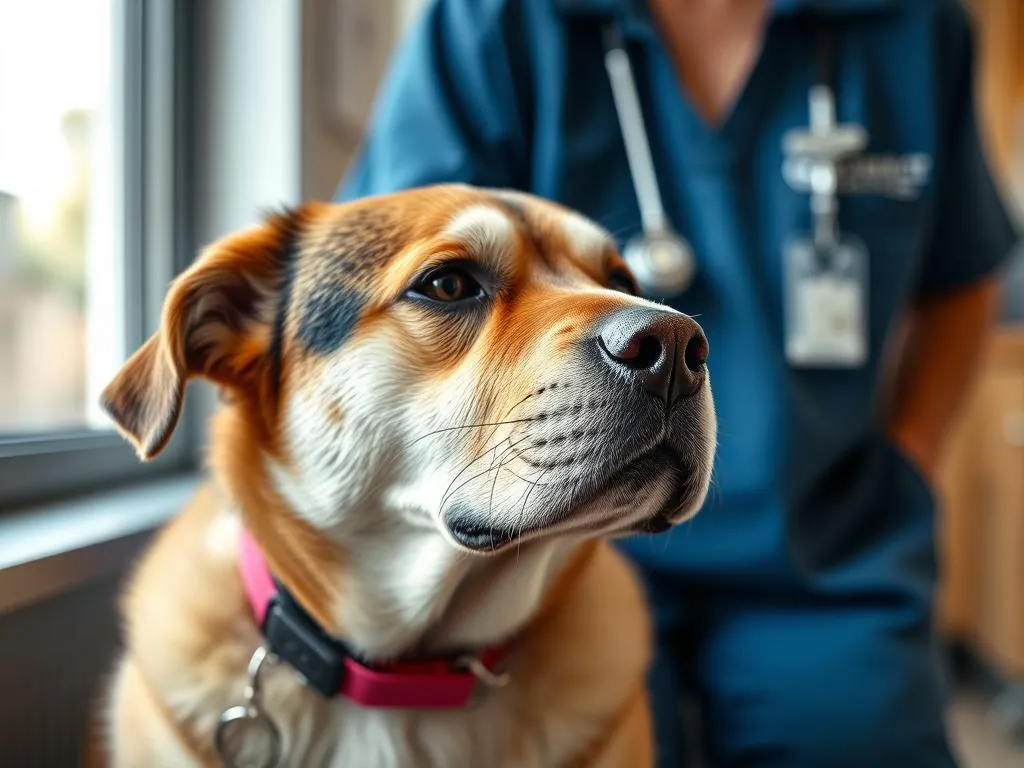
Introduction
Regular veterinary visits are vital for your dog’s health and well-being. These check-ups help catch potential health issues early, ensure vaccinations are up-to-date, and maintain your pet’s overall health. However, many dogs experience anxiety and fear during vet visits, making these trips challenging for both pet owners and their furry companions. How to calm a dog down at the vets office is a common concern among dog owners, as stress can lead to negative experiences for both the pet and the veterinarian.
In this article, we will explore effective strategies to soothe your dog during vet visits. By understanding the root causes of anxiety and implementing proactive measures, you can help your dog feel more comfortable and relaxed during these important appointments.
Understanding Dog Anxiety
What Causes Anxiety in Dogs?
Dog anxiety can stem from various factors, and understanding these triggers is essential for effective management. Some common causes include:
- Fear of Unfamiliar Environments: The vet’s office is often filled with unfamiliar sights, sounds, and smells, which can be overwhelming for many dogs.
- Previous Negative Experiences: If a dog has had a painful or scary experience at the vet in the past, it may develop a fear of returning.
- Sensitivity to Human Emotions: Dogs are incredibly attuned to their owners’ emotions. If you are anxious or stressed, your dog may pick up on that energy and feel more anxious.
- Lack of Socialization: Dogs that have not been adequately socialized may find new environments and situations particularly challenging.
Signs of Anxiety in Dogs
Recognizing the signs of anxiety in dogs can help you address their needs more effectively. Common indicators include:
- Body Language: Look for signs such as tail tucking, ears pinned back, and avoiding eye contact.
- Vocalizations: Whining, barking, or growling can indicate discomfort or fear.
- Physical Behaviors: Panting, pacing, or trembling can be signs of stress.
- Other Symptoms: Loss of appetite, excessive drooling, or destructive behavior may also manifest during periods of anxiety.
Preparing for the Vet Visit
Choosing the Right Vet
Selecting a veterinarian experienced in handling anxious dogs can significantly impact your pet’s experience. Look for recommendations from fellow pet owners, read reviews, and consider scheduling a meet-and-greet to gauge how the vet interacts with your dog.
Pre-visit Training and Socialization
Training and socialization can play a pivotal role in reducing anxiety. Consider implementing the following strategies:
- Basic Commands and Obedience Training: Teaching your dog basic commands like “sit,” “stay,” and “come” can provide a sense of structure during the visit.
- Socializing Your Dog: Gradually exposing your dog to different environments, people, and other pets can help reduce anxiety in new situations.
- Gradual Exposure to the Vet’s Office: If possible, visit the vet’s office before the actual appointment so your dog can become familiar with the environment without the added stress of a check-up.
Packing the Right Supplies
Having the right items on hand can make a significant difference in your dog’s comfort level at the vet. Consider packing:
- Familiar Items: Bring along a favorite blanket or toy to provide comfort in an unfamiliar environment.
- Treats and Rewards: Use high-value treats to reward your dog for calm behavior during the visit.
- Essential Documents: Ensure you have all necessary health records and vaccination documents ready for the appointment.
Techniques to Calm Your Dog at the Vet’s Office
Before the Appointment
Preparation begins at home. Implement these calming techniques before leaving:
- Exercise and Playtime: A good walk or play session can help expend excess energy, making your dog more relaxed during the visit.
- Pheromone Sprays or Calming Collars: Consider using pheromone products designed to promote relaxation in dogs. These can be applied before your appointment to enhance calmness.
At the Vet’s Office
Create a Positive Environment
When you arrive at the vet’s office, focus on creating a calm atmosphere:
- Calming Music: Some veterinary clinics play soothing music to help reduce anxiety in pets. If available, ask if you can wait in a quieter area or listen to calming sounds.
- Quiet Spots: If the waiting room is crowded, look for a quieter area where your dog can feel more secure.
- Avoiding Stressful Situations: Try to minimize exposure to stressful stimuli, such as loud noises or aggressive animals, by choosing the right time for your appointment.
Engage in Calming Activities
When at the vet’s office, engage your dog in activities that can help soothe their nerves:
- Use of Treats: Distract your dog with treats. Use positive reinforcement to create a positive association with the vet visit.
- Gentle Petting and Soothing Voice: Speak gently to your dog while petting them to provide reassurance and comfort.
- Interactive Toys: Bring along an interactive toy to keep your dog occupied while waiting for the appointment.
Behavioral Techniques
Implementing behavioral techniques can help your dog gradually adapt to the vet’s office:
- Desensitization Strategies: Slowly introduce your dog to various vet equipment, such as the scale or the examination table, in a non-threatening manner.
- Counter-conditioning: Associate the vet visit with pleasant experiences, such as treats or playtime, to create positive associations with the environment.
Post-Visit Care
Monitoring Your Dog’s Behavior
After the visit, it’s essential to observe your dog’s behavior:
- Signs of Stress: Keep an eye out for signs of lingering anxiety or stress after the appointment. This may include excessive panting or withdrawal.
- Tips for Easing Anxiety: Provide a calm environment at home, engage in soothing activities, and give your dog extra attention to help ease any post-visit anxiety.
Reinforcing Positive Experiences
To ensure your dog feels comfortable with future vet visits, reinforce positive experiences:
- Celebrating with Rewards: After the appointment, celebrate with a special treat or extra playtime to create a positive memory of the visit.
- Scheduling Follow-up Visits: Regular check-ups help maintain a routine, making future visits less stressful for your dog.
When to Seek Professional Help
Signs Your Dog May Need More Assistance
If your dog’s anxiety persists or worsens, it may be time to seek professional help. Look for signs such as:
- Persistent Anxiety: If your dog shows signs of anxiety that affect their quality of life, it may be time to consult a professional.
- Aggression or Extreme Fear Responses: If your dog reacts aggressively or exhibits extreme fear at the vet, seeking assistance is crucial.
Options for Professional Help
There are several avenues to pursue when seeking professional help for your dog’s anxiety:
- Consulting with a Veterinarian: Discuss possible anxiety medications or behavioral therapies with your veterinarian.
- Working with a Certified Trainer or Behaviorist: A professional trainer can provide guidance on behavior modification techniques.
- Exploring Holistic Treatments: Consider alternatives like acupuncture or aromatherapy, which may help soothe your dog’s anxiety.
Conclusion
Calming your dog down at the vet’s office is essential for a positive experience for both your pet and the veterinary staff. By understanding the causes of anxiety and implementing proactive strategies, you can help your dog feel more comfortable during their visits. Prioritizing regular vet check-ups not only contributes to your dog’s overall health but also strengthens the bond between you and your beloved companion. Remember, a positive relationship with veterinary care is crucial for your dog’s well-being.
By taking the time to prepare, engage in calming techniques, and reinforce positive experiences, you can transform your dog’s perception of the vet from a source of anxiety to a routine part of their care.









